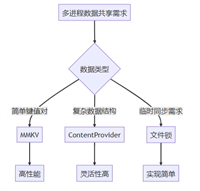1. 定义自定义属性
首先,我们需要在 res/values/attrs.xml 文件中定义自定义属性。这些属性可以是颜色、尺寸、字符串等。
创建或打开 res/values/attrs.xml 文件,并添加以下内容:
<?xml version="1.0" encoding="utf-8"?>
<resources>
<declare-styleable name="customview">
<attr name="customcolor" format="color" />
<attr name="customsize" format="dimension" />
</declare-styleable>
</resources>在上面的代码中,declare-styleable 标签定义了一组与 customview 关联的属性。每个 attr 标签定义了一个属性及其数据类型(这里我们定义了一个颜色属性 customcolor 和一个尺寸属性 customsize)。
2. 在布局文件中使用自定义属性
接下来,我们将在布局 xml 文件中使用这些自定义属性。假设我们有一个自定义视图 customview。
在布局文件中(例如 res/layout/activity_main.xml),我们可以这样使用自定义属性:
<com.example.customview
xmlns:app="http://schemas.android.com/apk/res-auto"
android:layout_width="wrap_content"
android:layout_height="wrap_content"
app:customcolor="@color/primarycolor"
app:customsize="16dp" />在这里,app:customcolor 和 app:customsize 是我们在 attrs.xml 中定义的自定义属性。
3. 在自定义视图中获取属性值
为了在自定义视图中使用这些属性值,我们需要在视图的构造函数中获取它们。我们可以使用 kotlin 的特性来简化代码,例如 apply 函数。
以下是 customview 的 kotlin 代码示例:
package com.example
import android.content.context
import android.graphics.canvas
import android.graphics.color
import android.util.attributeset
import android.view.view
class customview @jvmoverloads constructor(
context: context,
attrs: attributeset? = null,
defstyleattr: int = 0
) : view(context, attrs, defstyleattr) {
private var customcolor: int = color.black
private var customsize: float = 0f
init {
context.theme.obtainstyledattributes(
attrs,
r.styleable.customview,
0, 0
).apply {
try {
customcolor = getcolor(r.styleable.customview_customcolor, color.black)
customsize = getdimension(r.styleable.customview_customsize, 0f)
} finally {
recycle()
}
}
}
override fun ondraw(canvas: canvas) {
super.ondraw(canvas)
// 使用 customcolor 和 customsize 绘制内容
}
}在上面的代码中:
- 使用
@jvmoverloads注解生成多个构造函数,以便在 java 代码中也能方便地使用。 - 在
init块中使用context.theme.obtainstyledattributes方法获取属性值。 - 使用
apply函数将代码块作用于typedarray对象,并在finally块中回收它。
4. 使用样式应用自定义属性
我们可以在 res/values/styles.xml 文件中定义一个样式,并在样式中指定自定义属性的默认值。
在 res/values/styles.xml 文件中添加以下内容:
<resources>
<style name="customviewstyle">
<item name="customcolor">@color/primarycolor</item>
<item name="customsize">16dp</item>
</style>
</resources>然后,在布局文件中应用这个样式:
<com.example.customview
xmlns:app="http://schemas.android.com/apk/res-auto"
android:layout_width="wrap_content"
android:layout_height="wrap_content"
style="@style/customviewstyle" />通过这种方式,我们可以通过一个样式应用多个属性值,使得布局更加简洁和可重用。
5. 使用 kotlin 的特性
在 kotlin 中,我们可以利用一些特性来使代码更加简洁和易读。例如,使用 apply 函数可以让代码更加流畅:
context.theme.obtainstyledattributes(attrs, r.styleable.customview, 0, 0).apply {
try {
customcolor = getcolor(r.styleable.customview_customcolor, color.black)
customsize = getdimension(r.styleable.customview_customsize, 0f)
} finally {
recycle()
}
}此外,我们还可以使用 kotlin 的默认参数、命名参数等特性来提高代码的灵活性和可读性。
总结
通过以上步骤,我们可以在 android 中定义和使用自定义属性,并利用 kotlin 的特性使代码更加简洁和高效。这种方法可以提高布局的可重用性和可维护性,使开发过程更加顺畅。
到此这篇关于在 android 中定义和使用自定义属性的文章就介绍到这了,更多相关android自定义属性内容请搜索代码网以前的文章或继续浏览下面的相关文章希望大家以后多多支持代码网!







发表评论